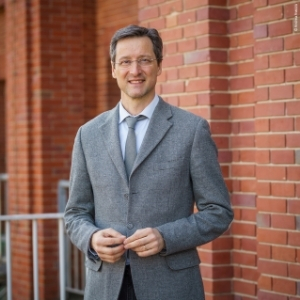The building envelope, also known as the building skin, is the barrier that separates us from the "micro-cosmos" of the indoor, residential core, and the "macro-cosmos" of the outdoor environment, nature or the city that surrounds us.
This limes is crucial because it defines and controls a multiple series of values: technical, energetic, protection and sealing-related but, last but not least, concerning representation and aesthetics.
It is in fact the external image that welcomes us, before we enter the internal volume, and it is this what a building qualifies and presents towards the built surroundings or nature.
Renzo Piano likes to remind us that an ugly book can be read while a poorly designed building (and its envelope obviously) becomes a problem for everyone who experiences it.
With a considerable multiple creative effort (performance, ergotechnical, production and aesthetic technician), the ADDMIRA range of systems is born, which makes technological innovation a strong factor in the positioning and diversification of Isopan solutions and interactions with other systems in the Manni Group galaxy
Versatility at the service of design freedom
Imagining prefabricated, light and integrated solutions for architectural facades means counting on a crucial player: the architect, the designer; he/she must find the maximum freedom of expression and composition so that his/her project is not "limited" by an industrialised solution.
Hence, Architecture and Industry, in a sort of "marriage 4.0", find mutual synergy with the objective of environmental sustainability which must, however, always also be aesthetic sustainability.
ADDMIRA was developed as a logic of off site production of "customer oriented" systems and solutions, adjusted each time according to the immanent design and morphological situation.
The brand itself unites the "additive" action with that of the final observation of something "admirable" where craftsmanship and detail are combined in a rigorous industrial process that guarantees quality, control and performance.
The potential of ADDMIRA envelopes
In Italy we often use the expression “architectural palimpsest” which has been the fortune of our historical cities, packed with different periods and construction techniques, where innovative solutions were used to reinforce, transform while perpetuate building portions of different periods.
For this reason ADDMIRA offers universal potential both on new builds and, especially on recovery (especially since it is estimated that the existing stock, which has various problems, will be more than 90% still in use in 2050).
In detail, the ADDMIRA concept differs in three interesting technological branches: ADDVision, ADDCross and ADDWind.
ADDVision, aesthetic solutions
ADDVision exploits Isopan's know-how by improving it with a refined kit of finishes, hidden fastenings, exclusive colours and so on for ever more aesthetic and less serial and industrial facades.
Think of 3D surface finishes such as Black Tech which brings together three evident types of performance: aesthetics (with a carbon effect) of adhesion between metal and foam and mechanical strength.
Or self-cleaning Clean Tech, anti-graffiti Urban Tech, with corner panels, profiles and aesthetic joint covers, spoilers and even lighting integration with Isoled.
ADDCross, new builds and housing recovery
ADDCross, on the other hand, is an actual pre-finished dry cladding and used for housing recovery solutions (think of all the stock built from the post-war period up to the end of the last century) that can benefit from the 110% Super Bonus.
Also in this case it is a stratigraphy that joins Isopan sandwiches (only panels with LEAF technology) to external claddings of various types through special adhesive films.
The substructure of metal brackets that is anchored to the existing structure (or to the new primary structure) resolves out-of-square and out-of-plumb issues and the system is equipped with refined thermal cutting solutions with strips of mineral wool (non-combustible), drip sheets and so on.
The finishes are numerous and the system is essentially “chameleonic” for tailored strategies based on the customer's needs. The off-site dry stratification is then followed by a process of dry assembly of the on-site wall portions
ADDWind, ventilated facades
Lastly, ADDWind, technically more complex than the previous two, which implements the theme of facade ventilation (with all of the obvious precautions for everything concerning the fire prevention design).
Also in this case, the work can concern both new builds and recovery, and the additional performance factors will concern various aspects: energy saving, resistance to thermal shock, durability, chimney effect and absolutely innovative aesthetics.
The study of the load-bearing bracket system (1.0 or 2.0) is extraordinary, which allows universal configurations both with vertically laid ribbed sandwich panels and with horizontally laid panels (polyurethane or mineral wool).
The system is therefore extremely flexible and universal in relation to the type of finish chosen by the designer and can have exposed or concealed fixings as well as refined solutions for corners, cornices and edge finishes.
Virtually no material is excluded thanks to partnerships that make it possible to lay, in addition to a range of perforated or expanded metal sheets, also the following:
- HPL;
- WPC;
- Fibre cement;
- Terracotta;
- Special panels.
Also in this case, integration with LED lighting is possible (Isoled) and the overall system was designed in harmony with the CAMs and with the building energy efficiency objectives.
In conclusion, ADDMIRA represents an important "leap forward" by Isopan towards issues that are clearly current in their strategic purposes (just think of the Green New Deal or the New European Bauhaus) but that immediately position a systemic innovation on the industrial tactical level that is differentiated, appropriate and which is driven by the aesthetics of our cities and the urban stock to be recovered or new yet to be expressed.


